|
|
| |
|
|
| |
|
|
|
|
| |
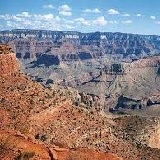 Travel
America Travel
America
Learn before you travel. This section of Fun Easy
English focuses on facts and other cool stuff about
your favorite U.S. state. This is great English
reading practice. This page focuses on the state of
Iowa. |
 Hey
if you cannot understand something on this page, Hey
if you cannot understand something on this page,
then use the Fun Easy English
dictionary
(opens in a new window) |
|
|
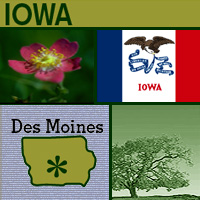 Iowa Iowa
Although it is sometimes called the "Corn State,"
Iowa really is a breadbasket for the U.S., with 90
percent of its land devoted to farming. The main
products are corn and hogs. Named for the Iowa
River, which was named for the Iowa, or Ioway,
Indians, Iowa joined the Union in 1846 as the 29th
state. The wild rose is the state flower and the
capital is Des Moines. |
|
Iowa
State Flag
Iowa was almost 75 years old before the state banner
was adopted by the Legislature in 1921. With memory of the
Civil War still fresh in their minds, Iowans had not adopted
a state banner because they felt a national banner was the
only one needed.
Iowa's flag was designed by the state's Daughters of the
American Revolution in response to Iowa national Guardsmen
stationed at the Mexican border during WWI that requested an
emblem of Iowa to represent their unit.
The flag consists of three vertical stripes: the blue stripe
stands for loyalty, justice and truth; the white stripe for
purity; and the red stripe for courage. On the white center
an eagle carries streamers in its beak which are inscribed
with the state's motto: "Our liberties we prize and our
rights we will maintain." The name "IOWA" is in red below
the streamers. The eagle carrying streamers also appears on
Iowa's state seal. |
|
Source:
State Symbols USA |
|
|
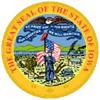 Iowa
State Facts Iowa
State Facts
Picture: state seal of Iowa |
|
State Capital |
Des Moines |
|
Nickname |
Hawkeye State / Corn State |
|
Motto |
Our liberties we prize and our rights we will
maintain. |
|
Statehood |
December 28, 1846 (29th) |
|
Origin of Name |
From the Dakota Indian word "Ayuhwa," meaning
"sleepy ones," referring to a tribe living in that
area |
|
Largest Cities |
Des Moines, Cedar Rapids, Davenport, Sioux City,
Waterloo |
|
Border States |
Illinois, Minnesota, Missouri, Nebraska, South
Dakota, Wisconsin |
|
Area |
55,875 sq. mi.; 23rdlargest |
|
State Bird |
Eastern Goldfinch |
|
State Flower |
Wild Prairie Rose (rosa pratincola) |
|
State Tree |
Oak (quercus) |
|
State Song |
The Song of Iowa |
 Travel and tourism site
for Iowa - This state travel and territorial tourism
site provides ideas for your vacations, meetings, and more. Travel and tourism site
for Iowa - This state travel and territorial tourism
site provides ideas for your vacations, meetings, and more. |
|
|
Iowa Stories |
|
|
National Czech and Slovak Museum and Library
What are some of the ethnic groups in your community? Do any of them
have a museum to honor their heritage? Cedar Rapids, Iowa, may not
seem a likely place for a museum honoring Czechs and Slovaks, but
that's exactly where you will find the National Czech and Slovak
Museum and Library.
In October 1996, three heads of state, America's Bill Clinton, the
Czech Republic's Vaclav Havel, and Slovakia's Michal Kovac dedicated
the museum and library, which were created to preserve the cultural
traditions of some of the first immigrants to the Cedar Rapids area
-- Czech and Slovak farmers. Although there are differences, Czechs
and Slovaks share a common Slavic heritage. An interesting piece of
shared Czech and Slovak culture is that spiders are considered good
luck. So don't forget to say "dobr'y den" the next time you see a
spider. It means "good day" in Czech! |
|
|
Prairie Voices - Teaching History
How much do you know about the history of your state? In Iowa, state
officials are making sure that Iowans know their state history. They
have even created a special educational program to teach students.
The State Historical Society of Iowa appointed a Blue Ribbon Task
Force on the Teaching of Iowa History because some were concerned
that young people were growing up with little understanding or
appreciation of their Iowa heritage. Prairie Voices: An Iowa
Heritage Curriculum was created to teach Iowa's historical and
cultural heritage.
As part of Prairie Voices, a timeline has been created to document
the state's history that goes back 2.5 billion years! How far back
can you trace your state's history? Other sources of information for
students to learn about Iowa history include historic farms,
cemetery studies, historic sites and Native American history and
heritage. How many sources can you think of to learn about your
state? |
|
|
Iowa State Fair
Iowa is a state of farms. It is one of the leading producers of food
in America, and its annual state fair celebrates Iowa's important
contributions to the nation's well being.
Since 1854, people from every corner of the state have flocked to
Des Moines for the annual Iowa State Fair every August. The fair is
the state's largest event, attracting nearly 1 million visitors a
year -- not only from Iowa but also from all over the Midwest. The
fair's primary purpose is to celebrate Iowa's livelihood -- farming.
There are livestock shows, including exhibitions of dairy and beef
cattle, sheep, hogs, horses and poultry. The fair also provides a
place for farmers to meet and discuss innovations, equipment, and
successes. There is also a place where visitors can hold the baby
animals.
In addition to animals there are many other activities at the fair.
Some people show off their cooking skills or compete in a talent
show. In the cultural center, the fair hosts the state's largest
arts show, featuring photography, sculpture, and painting. |
|
|
Tulip Time
Many of the people who founded Iowa were from the Netherlands. Can
you think of something the Netherlands is famous for that people
might have brought with them? Hint: it's a type of flower.
If you answered "tulips," you would be right. You'd also be right to
guess that Iowa still loves this springtime flower. So much so that
the state holds a three-day Tulip Festival in the city of Pella to
remember the sacrifices of the town's Dutch founding fathers.
Hendrik Pieter Scholte, born in 1805 in Amsterdam, the Netherlands,
was the founder of Pella. Scholte was a minister who immigrated with
his wife, three daughters and a following of 800 people to build
their "City of Refuge" in America in the late 1840s. They came to
seek religious freedom. They moved to a rural area and by necessity
Scholte became a jack-of-all-trades. He laid out a plan for the
town, chose names for the streets, and built a "make-do" church. He
took care of legal affairs, started a lime and brick kiln and a
sawmill, opened a bank, established a newspaper, and became the
postmaster and the land agent. That's a lot of extra work for an
already busy preacher! As you can tell, tulips were just one part of
Dutch culture that Scholte and his followers brought with them to
Pella. |
|
|
Iowa's Most Popular Crop
About 90 percent of Iowa's land is dedicated to farming. In addition
to producing soybeans and raising livestock, the state grows corn in
great quantities. Much of its economy is based on the production of
corn and corn byproducts -- popcorn, corn oil, corn syrup, cornmeal,
cornstarch, and animal feed.
Corn, also known as maize, was grown in the Americas long before the
European explorers arrived. It was an important source of food for
many native peoples. Scientists believe that corn originated in
Mexico thousands of years ago and that Native Americans cultivated
it from a wild grass commonly known as teosinte. Archaeologists have
found traces of corn that are 5,300 years old. |
|
|
National Balloon Classic
Have you ever seen a Flying Purple Eater? If you go to the National
Balloon Classic in Indianola, Iowa, in August, you just might. The
Flying Purple Eater is an insect-like hot-air balloon -- one of more
than 100 -- that takes part in this three-day event.
Held each year, this hot-air balloon competition and race began in
1970 as the first U.S. National Championship in ballooning. Do you
know how hot-air balloons work? Balloons are aerostats, which means
that they are lighter than air when inflated. Once a balloon is in
the air, it moves with an air mass or wind, which carries it along
at the same speed and in the same direction as the air.
Do you remember how the Wizard landed in Oz? He was in a hot-air
balloon. The pilot of the balloon has control of the altitude (how
high or low the balloon flies) and can alter its course by finding
an air mass going in a slightly different direction. Hot air
balloons use ordinary air as the lifting gas. By heating the air
inside the balloon, the pilot makes that air lighter than the
outside air, and the balloon rises. As the internal air cools, the
balloon becomes heavier and descends unless the pilot adds more
heat. |
|
Source:
Library of Congress |
|
 National
Monuments of Iowa National
Monuments of Iowa
The following is a description of national monuments in the state
of Iowa. There are no national forests or
parks in this state. If you plan to visit or live in
Iowa for awhile then you should definitely
plan to visit some of these fantastic
places. |
|
|
|
National Monuments |
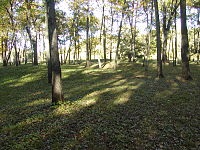 Effigy
Mounds Effigy
Mounds
This monument preserves three prehistoric
sites with 206 prehistoric mounds, notable
for 31 unusual mounds in the shape of
mammals, birds, or reptiles. |
|
|
|
|
|
|
|
|
|
|
|
|
Cool America |
 About the U.S.A. About the U.S.A.
About the U.S.A. is an American
Studies reader that examines the customs, government, and history of the
United States of America. The text provides a wealth of information on U.S.
geography and history; the roles of local, state, and federal government;
national holidays and symbols; the Constitution; and citizenship. The book,
which was written for intermediate to advanced learners of English, contains
a range of activities for language students to practice listening, speaking,
reading, and writing. (opens to a new PDF window)
Great English reading
practice. |
 About
America About
America
Learn about the fascinating history and government of
the United States of America. Lessons include content on
American Government, American History, and Integrated
Civics. Handouts with interactive games and
student-centered activities encompass all four language
skills: speaking, listening, reading, and writing.
Great English reading practice for
beginning to intermediate students. |
 American Teens Talk! American Teens Talk!
Americans Teens Talk! is a collection of interviews of
American high school students. Each interview is accompanied by vocabulary
notes and discussion questions. The interviews in American Teens Talk! give
learners a view into the lives of adolescents in the U.S. Through the
written format of the interviews, learners are able to increase their
vocabulary, practice their reading and listening skills, engage in
discussions, and learn more about U.S. culture. These
interviews come with audio programs.
Great English listening and
reading |
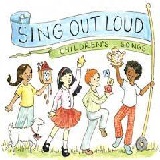 Sing Out Loud Children's Songs Sing Out Loud Children's Songs
Sing Out Loud Children's Songs includes popular children's songs in the U.S.A. Posters accompany the
individual Sing Out Loud Children's Songs. These
songs come with audio programs.
Great English listening and reading
practice. |
 Sing Out Loud Traditional Songs Sing Out Loud Traditional Songs
The Sing Out Loud Traditional Songs
collection contains 13 traditional American folk songs and song lyrics.
Listen to the songs online, read the lyrics, and collect the posters that
accompany the songs. These
songs come with audio programs.
Great English listening and reading
practice. |
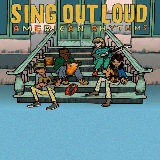 Sing Out Loud American Rhythms Sing Out Loud American Rhythms
Do you love music? Want to use it
to learn English? Check out the hip-hop inspired song "Peace" from Sing Out
Loud American Rhythms. American Rhythms includes a variety of musical genres
from many different artists in the U.S.A. These songs will appeal to teens
and young adults. These
songs come with audio programs.
Great English listening and reading
practice. |
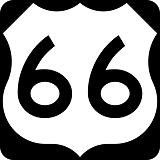 Route
66 - Famous American Road Route
66 - Famous American Road
U.S. Route 66 (US 66 or Route 66), also known as the Will Rogers Highway, the
Main Street of America or the Mother Road, was one of the original highways in
the U.S. Highway System. The highway, which became one of the most famous roads
in the United States, originally ran from Chicago, Illinois, through Missouri,
Kansas, Oklahoma, Texas, New Mexico, and Arizona before ending in Santa Monica,
California, near Los Angeles, covering a total of 2,448 miles (3,940 km). It was
recognized in popular culture by both the hit song "(Get Your Kicks on) Route
66" and the Route 66 television show in the 1960s. |
Route 66: The Highway That's the Best
(Beginner - Listening)
A video lesson which shows you an interesting place in America.
The English is
spoken at 75% of normal speed.
Great English listening practice.
This video shows travel along Route 66, the most famous road in
America. |
Chicago: The Start of Route 66
(Beginner - Listening)
A video lesson which shows you an interesting place in America.
The English is
spoken at 75% of normal speed.
Great English listening practice.
This video shows travel along Route 66, the most famous road in
America. |
Going West for Decades on Route 66
(Beginner - Listening)
A video lesson which shows you an interesting place in America.
The English is
spoken at 75% of normal speed.
Great English listening practice.
This video shows travel along Route 66, the most famous road in
America. |
Arizona: The Spirit of Route 66
(Beginner - Listening)
A video lesson which shows you an interesting place in America.
The English is
spoken at 75% of normal speed.
Great English listening practice.
This video shows travel along Route 66, the most famous road in
America. |
Route 66 California: The End of the Trail
(Beginner - Listening)
A video lesson which shows you an interesting place in America.
The English is
spoken at 75% of normal speed.
Great English listening practice.
This video shows travel along Route 66, the most famous road in
America. |
Ten Must-See Route 66 Attractions
(Beginner - Listening)
A video lesson which shows you an interesting place in America.
The English is
spoken at 75% of normal speed.
Great English listening practice.
This video shows travel along Route 66, the most famous road in
America. |
Four Famous Foods On Route 66
(Beginner - Listening)
A video lesson which shows you an interesting place in America.
The English is
spoken at 75% of normal speed.
Great English listening practice.
This video shows travel along Route 66, the most famous road in
America. |
International Tourists Drawn to Route 66
(Beginner - Listening)
A video lesson which shows you an interesting place in America.
The English is
spoken at 75% of normal speed.
Great English listening practice.
This video shows travel along Route 66, the most famous road in
America. |
|
|
|
|
Search Fun Easy English |
|
|
|
|
|
|
|
|
|
|
|
|
|
|
|
About
Contact
Copyright
Resources
Site Map |